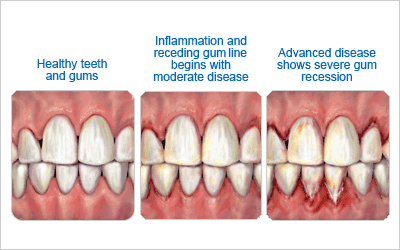Periodontal Disease
"Gum disease" describes a range of conditions that affect the supporting tissues (gums) for the teeth. The supporting tissues comprise both the surface tissues that can be seen in the mouth and also the deeper tissues of the bone and root surfaces.
Periodontal disease is caused by bacteria. Bacteria evolve into plaque which is a sticky, colourless film that forms on the teeth surfaces, particularly at the gum line. Other bacteria intrude in between the gum and the tooth creating a "pocket".
Some people are at a higher risk of developing periodontal disease. Smoking is one of the major risk factors. Other conditions include diabetes, stress and pregnancy and various medications can also contribute.
Gum disease can be diagnosed simply by noting bleeding when brushing or flossing. In its initial phases it is reversible! This is called Gingivitis and can be reversed by removing the bacterial film correctly twice daily.
If the gums are bleeding most people will stop brushing HOWEVER if your gums do bleed you need to brush and floss/wood stick more!
If Gingivitis is left to continue it will lead to periodontitis which technically means destruction of the ligaments that hold the tooth into the jaw.
Once part of the ligament has broken down it cannot be regenerated however with professional care and ongoing home care the damage can be halted permanently.

